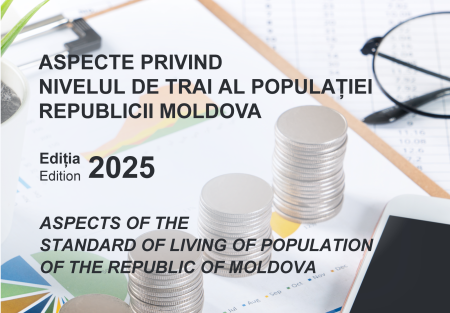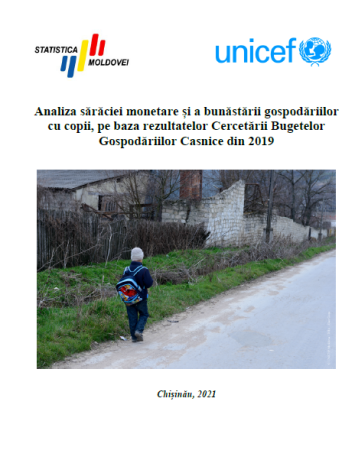Approaches to social exclusion in the Republic of Moldova. Methodological and analytical aspects, edition 2010
 To analyse social exclusion/inclusion and social cohesion in Moldova, the authors of the study used the statistical surveys conducted regularly by the National Bureau of Statistics (NBS): Household Budget Survey, the Ad Hoc Module on “Social exclusion” carried out for the fi rst time in Moldova in the fi rst quarter of 2009, as well as administrative data provided by various ministries (the Ministry of Labour, Social Protection and Family, the Ministry of Health, the Ministry of Economy, the Ministry of Education, etc.).
To analyse social exclusion/inclusion and social cohesion in Moldova, the authors of the study used the statistical surveys conducted regularly by the National Bureau of Statistics (NBS): Household Budget Survey, the Ad Hoc Module on “Social exclusion” carried out for the fi rst time in Moldova in the fi rst quarter of 2009, as well as administrative data provided by various ministries (the Ministry of Labour, Social Protection and Family, the Ministry of Health, the Ministry of Economy, the Ministry of Education, etc.).
Proposed indicators allow social exclusion/inclusion to be monitored and sector policies to be implemented by providing a comprehensive analysis of their impact on the population’s quality of life. Monitoring indicators are grouped by 10 main aspects of the people’s quality of life:
- poverty and inequality (14 indicators),
- housing and households’ housing conditions (10 indicators),
- labour market (14 indicators);
- education (19 indicators),
- healthcare (13 indicators),
- social protection (9 indicators),
- justice and security (8 indicators),
- culture, sports and leisure (4 indicators),
- participation in social life, governance, communication and access to information (10 indicators)
- environment (2 indicators).
The main focus in this study is on the methodology of calculation of the monitoring indicators of social exclusion/inclusion and social cohesion. Accordingly, the indicators of social exclusion/inclusion are showed in time series.
The study was supported by UNDP Moldova andUNIFEM in cooperation with the National Bureau of Statistics and published in the framework of the project "Consolidation of the National Statistical System" with the financial support of the International Agency SIDA.
Electronic version
- Report a mistake. Select the desired text and press CTRL + ENTER



